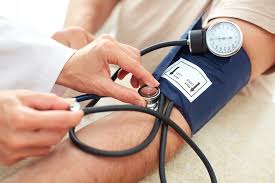
Home Blood Pressure Monitoring: Arm Position Makes a Significant Difference, Study Finds
A new study from Johns Hopkins University has revealed that arm positioning plays a crucial role in obtaining accurate blood pressure readings, both at home and in clinical settings. Published in JAMA Internal Medicine, the research highlights the need for both patients and healthcare providers to be more vigilant about proper technique when measuring blood pressure. With nearly half of U.S. adults diagnosed with elevated blood pressure, ensuring accuracy in these measurements is essential for effective management of conditions such as hypertension, which can lead to serious cardiovascular issues like heart attacks and strokes if left untreated.
The study, led by Dr. Tammy Brady, vice chair for clinical research in pediatrics at Johns Hopkins, explored how different arm positions affect blood pressure readings. It found that when the arm is not positioned correctly, readings can be significantly overestimated. The researchers compared three arm positions: supported on a desk, supported on the lap, and hanging at the side. Their findings revealed that supporting the arm on the lap overestimated systolic blood pressure by nearly 4 mmHg, while allowing the arm to hang at the side resulted in an overestimation of nearly 7 mmHg.
These discrepancies are significant because systolic pressure, the top number in a blood pressure reading, indicates the pressure exerted on artery walls when the heart beats. An inaccurate reading can lead to misdiagnosis or improper treatment, such as mistaking elevated blood pressure for stage 2 hypertension.
Guidelines from the American Heart Association (AHA) recommend specific practices for accurate blood pressure measurements, including using a correctly sized cuff, ensuring back support, keeping feet flat on the floor, and supporting the arm at heart level on a desk or table.
Despite these recommendations, the study found that clinicians often neglect arm support, taking measurements while patients sit on exam tables with their arms unsupported. This oversight can result in inflated blood pressure readings, as demonstrated by the study, which involved 133 participants aged 18 to 80.
Dr. Sherry Liu, an epidemiology research coordinator at Johns Hopkins, noted that these overestimated readings could mean the difference between a normal blood pressure level and a diagnosis of hypertension. For example, a reading of 123 could inaccurately appear as 130 or more, pushing a patient into a higher risk category. While the study focused on automated blood pressure devices, the findings underscore the importance of proper technique across all measurement methods.
This research serves as a reminder that patients should ensure their arm is properly supported during blood pressure checks, and healthcare providers must adhere to best practices to avoid mismanagement of the condition. By following the recommended guidelines, both patients and doctors can ensure more accurate readings, leading to better diagnosis and treatment outcomes.